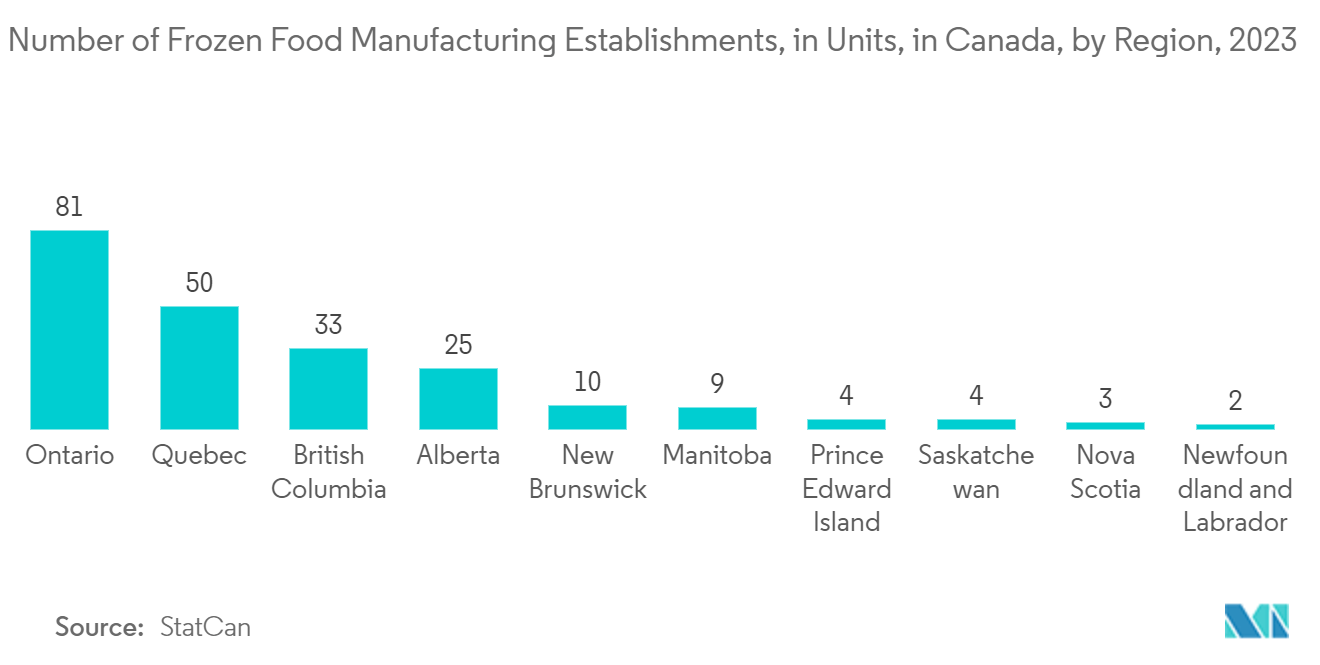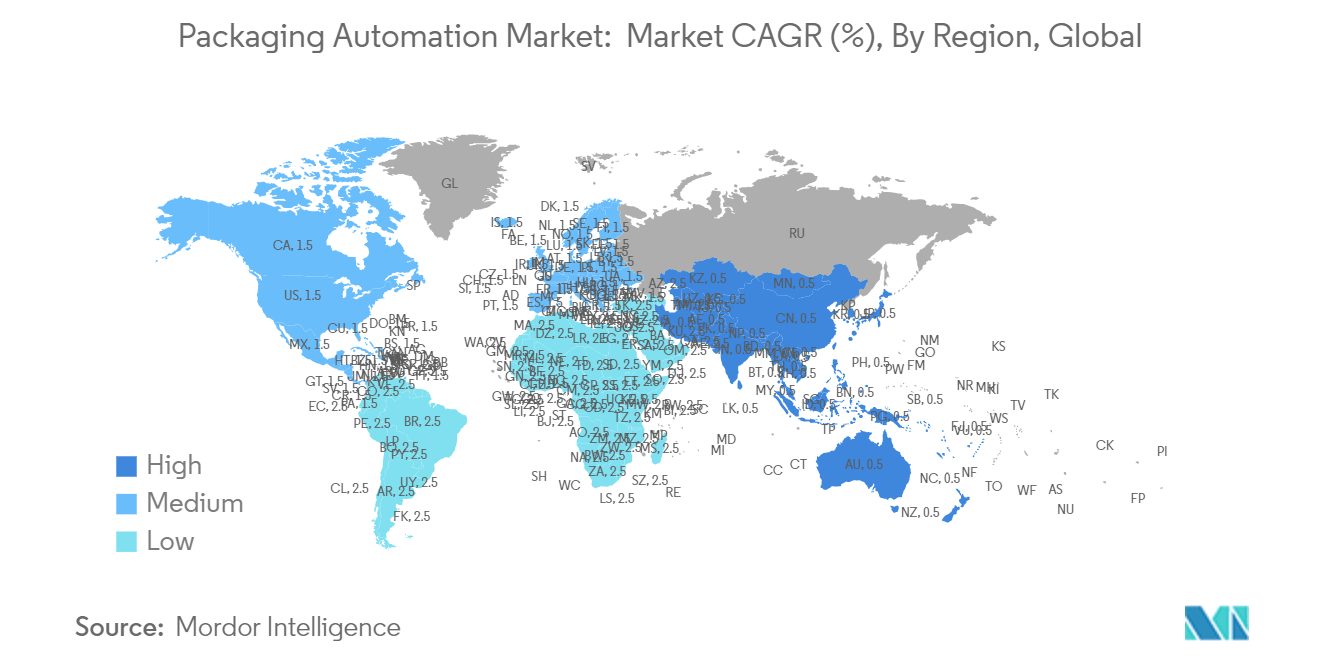Market Trends of Packaging Automation Industry
Food End-User Segment Expected to Hold Significant Market Share
- Automation in food packaging is pivotal for enhancing operational efficiency, maintaining product quality, and meeting consumer demands. By automating tasks such as filling, sealing, labeling, and palletizing, food packaging operations become faster and more consistent. This, in turn, increases production rates and reduces labor requirements. Automated systems ensure precision and uniformity, which are critical for maintaining the integrity and safety of food products. Automation minimizes human error and contamination risks, thereby ensuring higher standards of hygiene and compliance with stringent food safety regulations.
- Automation has revolutionized various industries, and the food and beverage sector is no exception. From basic pick-and-drop functions to complex processes like can, pouch, or packet manufacturing, robotics solutions now cover the entire packaging spectrum. This transformation in packaging methodologies has led to increased productivity, cost efficiencies, and improved quality, even in the packaging of everyday items like candies. Advanced robotics and automation technologies enable manufacturers to handle a wide range of packaging materials and formats, offering greater flexibility and adaptability to market demands. The integration of sensors and real-time monitoring systems further enhances the efficiency and reliability of automated packaging lines.
- In May 2023, Rotzinger, a Swiss OEM packaging machinery manufacturer serving the food, beverage, and cosmetic sectors, partnered with CoreTigo, a specialist in industrial wireless automation, at Interpack. By integrating CoreTigo's IO-Link wireless technology into Rotzinger's advanced packaging equipment, the collaboration aims to introduce enhanced capabilities, emphasizing flexibility, throughput, and sustainability. This partnership highlights the growing trend of adopting wireless communication technologies in industrial automation, which facilitates seamless data exchange and remote monitoring. The integration of such technologies not only improves operational efficiency but also supports predictive maintenance and reduces downtime.
- As food companies increase their R&D investments to refine their offerings and leverage automation for improved hygiene, extended shelf life, and cost efficiencies, the outlook for packaging automation appears promising for substantial growth. The focus on R&D underscores the industry's commitment to innovation and continuous improvement. By investing in advanced automation technologies, food companies can achieve economies of scale, reduce waste, and enhance their competitive edge in the market. These advancements are expected to drive the adoption of automation solutions across the food packaging industry, supporting long-term growth and sustainability.

North America Expected to Hold Significant Market Share
- The United States stands out as a leading packaging market in North America, with industry giants like Amcor Ltd and Mondi PLC spearheading significant investments in innovation and R&D activities. This heightened focus on advanced packaging technologies aims to enhance productivity, cut labor expenses, and offer more tailored packaging solutions. Notably, a growing emphasis on sustainability is prompting firms to adopt new machinery that minimizes environmental impact and supports eco-friendly packaging practices.
- Moreover, the United States leverages its robust packaging machinery exports, bolstering its market position. Companies, including Bosch Packaging Services, are diversifying into various sectors such as confectionery, bakery, fresh and frozen foods, and pharmaceuticals. This diversification strategy not only broadens their market reach but also drives technological advancements and operational efficiencies across different packaging applications.
- Intelligent Conveyor Technology (ICT) systems are emerging as a smart alternative to traditional mechanics, overcoming their throughput and physical limitations. Rockwell Automation's MagneMove Lite system, for instance, is revolutionizing operations by enabling faster and more flexible payload movement. This system enhances higher-SKU operations' efficiency, allowing for quicker adaptation to changing production demands and reducing downtime.
- Meanwhile, Canada's packaging sector is increasingly turning to compact, automated solutions like remote vision sensors, aligning with the advancements of Industry 4.0. Notably, AI and ML technologies are finding applications in facilities where space constraints limit investments in larger automation machinery. These innovations, such as remote sensors with enhanced resolution, allow for precise inspections without direct human involvement, improving accuracy and reducing the need for manual labor. In addition, these technologies facilitate real-time monitoring and data analysis, leading to more informed decision-making and optimized production processes.


